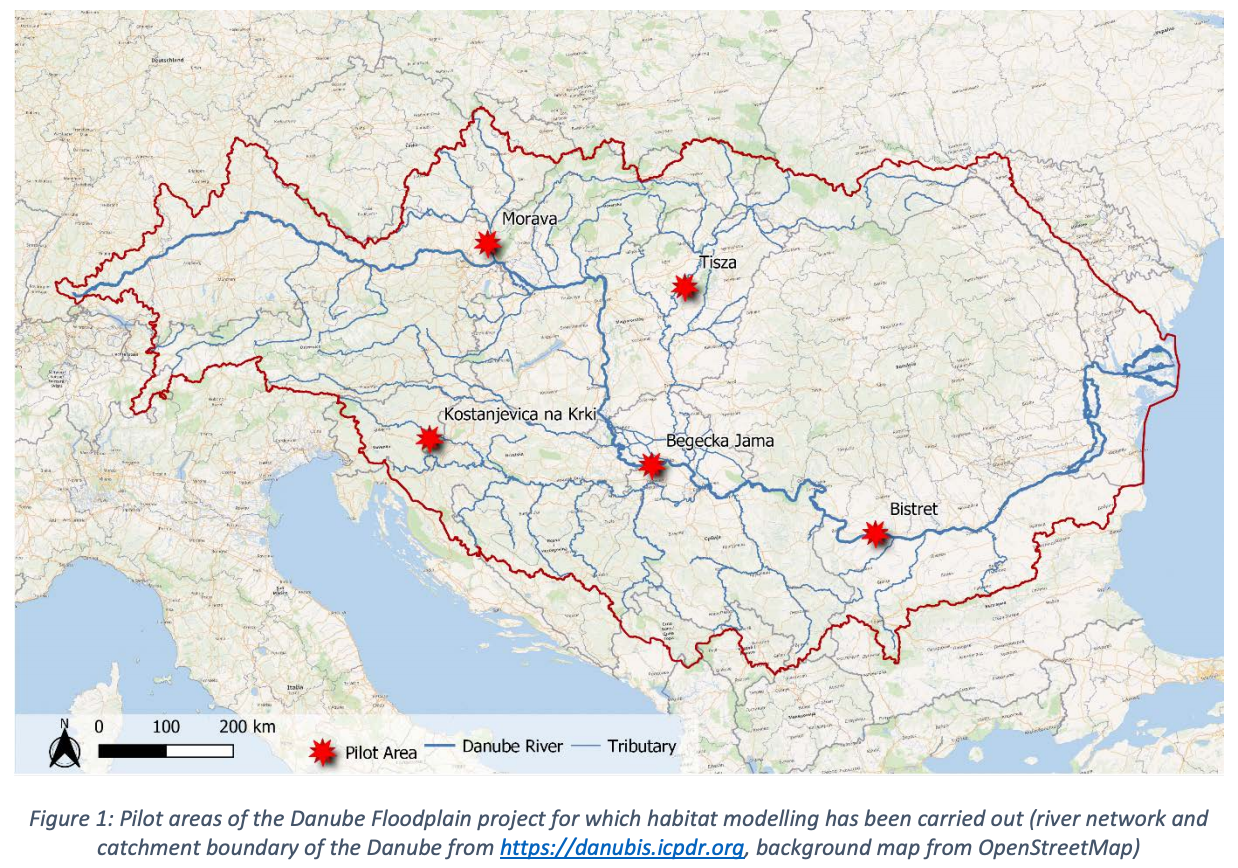Danube Floodplain - Reducing the flood risk through floodplain restoration
10-08-2021
Floods are a natural phenomenon. They can, however, turn into disasters causing widespread damage - especially where natural floodplains have been cut off from their rivers. In the Danube Floodplain project efforts are made to develop new management strategies for floodplains, improving flood protection while maximizing benefits for biodiversity conservation.
June 4, 2021
 Floods in Komárom, Hungary. Image: Pixabay
Floods in Komárom, Hungary. Image: Pixabay
Floodplains are areas on either side of a stream/river which are regularly flooded on a periodic basis. Their own natural capacity to absorb excess waters provides a potentially very cost-effective way of achieving flood protection. However, according to the International Commission for the Protection of the Danube River (ICPDR) data, compared with the 19th Century, less than 19% of the former floodplain area (7,845 km2 out of 41,605 km2 ) remains in the entire Danube River Basin.
At the same time, the ability to achieve flood protection through traditional infrastructure measures, such as by building dams, has been highly affected by climate change. With floods becoming more serious and frequent due to climate change, more sustainable, nature-based solutions are needed to reduce negative impacts and preserve dynamic water ecosystems.
Restoring Danube's floodplains
For 22 partners gathered in the Danube Floodplain project, one very effective solution lies in preserving and restoring the floodplains. An analysis has been used to identifiy areas where, with regards to flood hazard reduction and ecological potential, restoration efforts should be spent. Taking into consideration that many floodplain areas are used for agriculture, the assessment of potential floodplains included a number of different parameters next to hydrological and ecological characteristics, balancing flood protection with the needs of agricultural communities. The results were then made publicly available in the form of interactive maps in the Danube Floodplain GIS database.
On a smaller scale, a more detailed assessment of concrete measures in five so-called pilot areas was carried out. Three out of five of these areas are located at tributaries of the Danube River: At the Morava at the border between Czech Republic and Slovakia, at the Krka in Slovenia and at the Tisza in Hungary. The other two areas are located directly at the Danube: Begečka Jama in Serbia and Bistret in Romania.
Construction works have already started at Fokorúpuszta by the River Tisza. The works include dyke relocation, wetland restoration and land rehabilitation. When completed, this area is going to serve as an example for further floodplain reconstruction projects not only by the River Tisza, but also by other rivers. The aim is to create showcases demonstrating how floodplain restoration can have positive effects on flood risk reduction and ecological conditions both at the same time.
"In Hungary we have lost more wetlands than the global average during the last one hundred years. Nevertheless, these diverse habitats play an important role in climate regulation. Especially in Hungary where due to climate reasons more water evaporates than falling down as rain. Wherever possible, we have to give the rivers back their floodplains. This is beneficial not only for nature, but for society and farmers."
Andre Samu, Living Rivers Programme Manager, Danube River Area, WWF Hungary

Image: Danube Floodplain
Bringing diverse interests together to achieve benefits for all
As any plan for restoration of floodplains affects a wide range of actors, creating windows of opportunity for dialogue was another challenge. For that, a series of workshops focusing on the combination of classical and green infrastructure and natural retention measures were organized in Hungary, Slovakia, Czech Republic, Serbia and Romania. Altogether, the workshop were attended together by over 200 stakeholders from water management, agriculture as well as the nature protection sectors, providing an opportunity for information exchange and for sharing each others' needs and interests.
In order to further advance integrated floodplain management among practitioners, decision makers and other relevant stakeholders, different already implemented measures targeted on floodplain restoration and preservation, like runoff control and appropriate land management, have been collected as best practices.
 Image: Danube Floodplain
Image: Danube Floodplain
